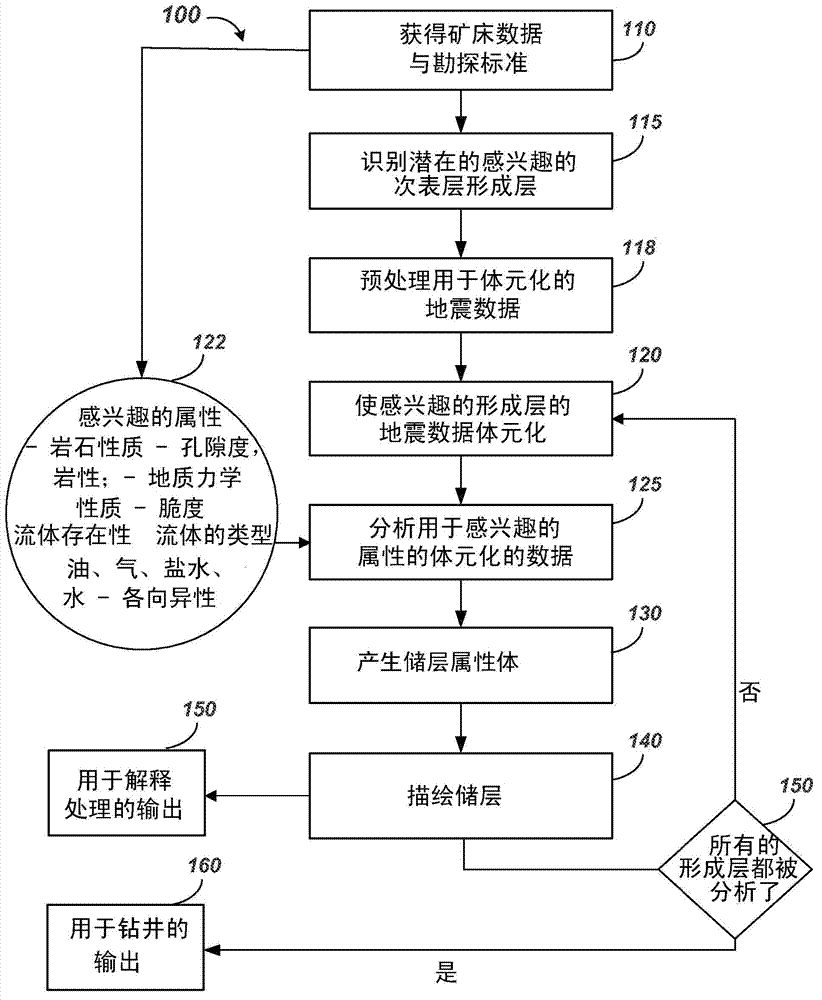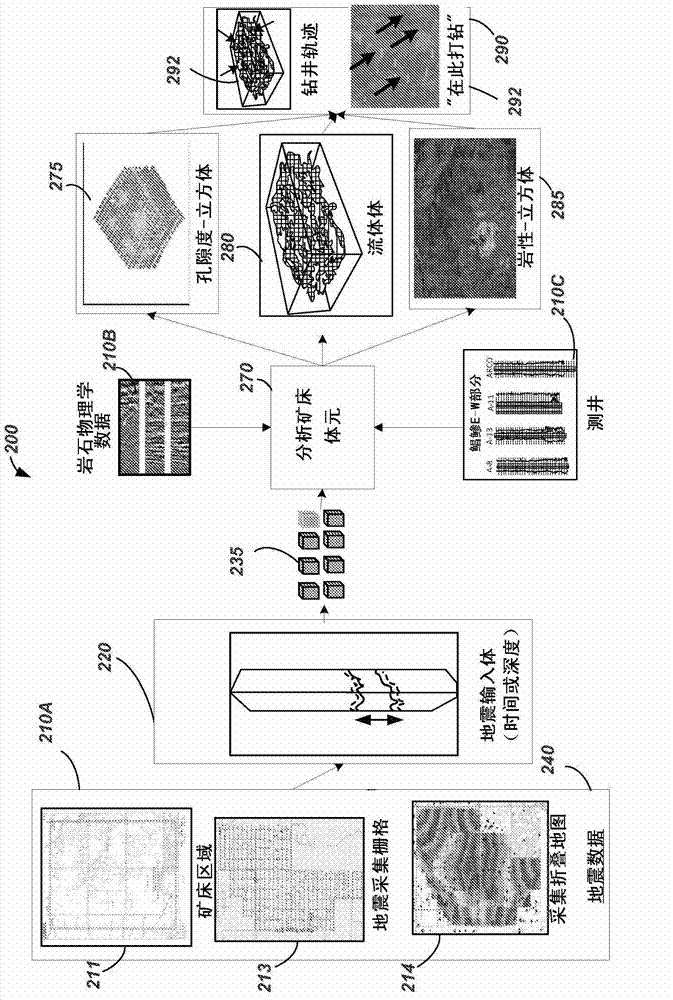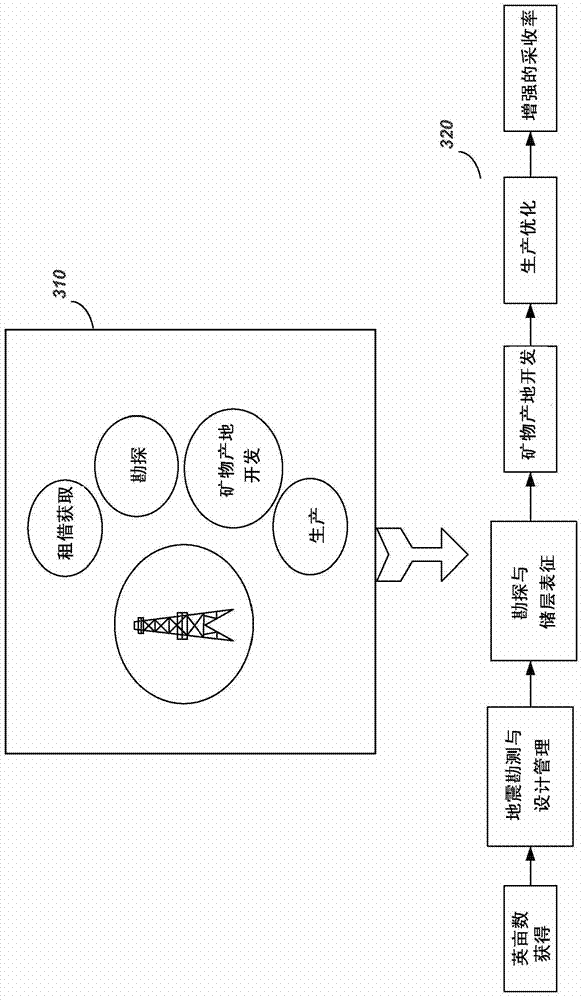Active noise injection computations for improved predictability in oil and gas reservoir discovery and characterization
An attribute, subsurface technology, applied in the field of active noise injection calculation to improve the predictability of oil and gas field discovery and characterization, can solve the problems of expensive exploratory wells and no production
- Summary
- Abstract
- Description
- Claims
- Application Information
AI Technical Summary
Problems solved by technology
Method used
Image
Examples
Embodiment Construction
[0039] figure 1 An example process 100 for reservoir characterization (also referred to as lateral subsurface prediction of a reservoir) is shown. In some examples, process 100 may be used to construct a computer model of a reservoir beneath the earth's surface that includes all of the characteristics of the reservoir that are related to its ability to store hydrocarbons and also to produce hydrocarbons. The process 100 may be used to discover, characterize, and size hydrocarbon (oil and gas) reservoirs to use seismic data to generate drilling patterns for wells onshore or offshore. At 110, deposit data and exploration criteria are obtained. Exploration criteria may include aligned exploration targets, such as criteria to search for one or more formations in a deposit (location being analyzed for deposits). Deposits are defined as areas covering potential subsurface traps believed to contain hydrocarbons. The geological factors necessary for the production of oil and gas fr...
PUM
 Login to View More
Login to View More Abstract
Description
Claims
Application Information
 Login to View More
Login to View More - R&D
- Intellectual Property
- Life Sciences
- Materials
- Tech Scout
- Unparalleled Data Quality
- Higher Quality Content
- 60% Fewer Hallucinations
Browse by: Latest US Patents, China's latest patents, Technical Efficacy Thesaurus, Application Domain, Technology Topic, Popular Technical Reports.
© 2025 PatSnap. All rights reserved.Legal|Privacy policy|Modern Slavery Act Transparency Statement|Sitemap|About US| Contact US: help@patsnap.com



